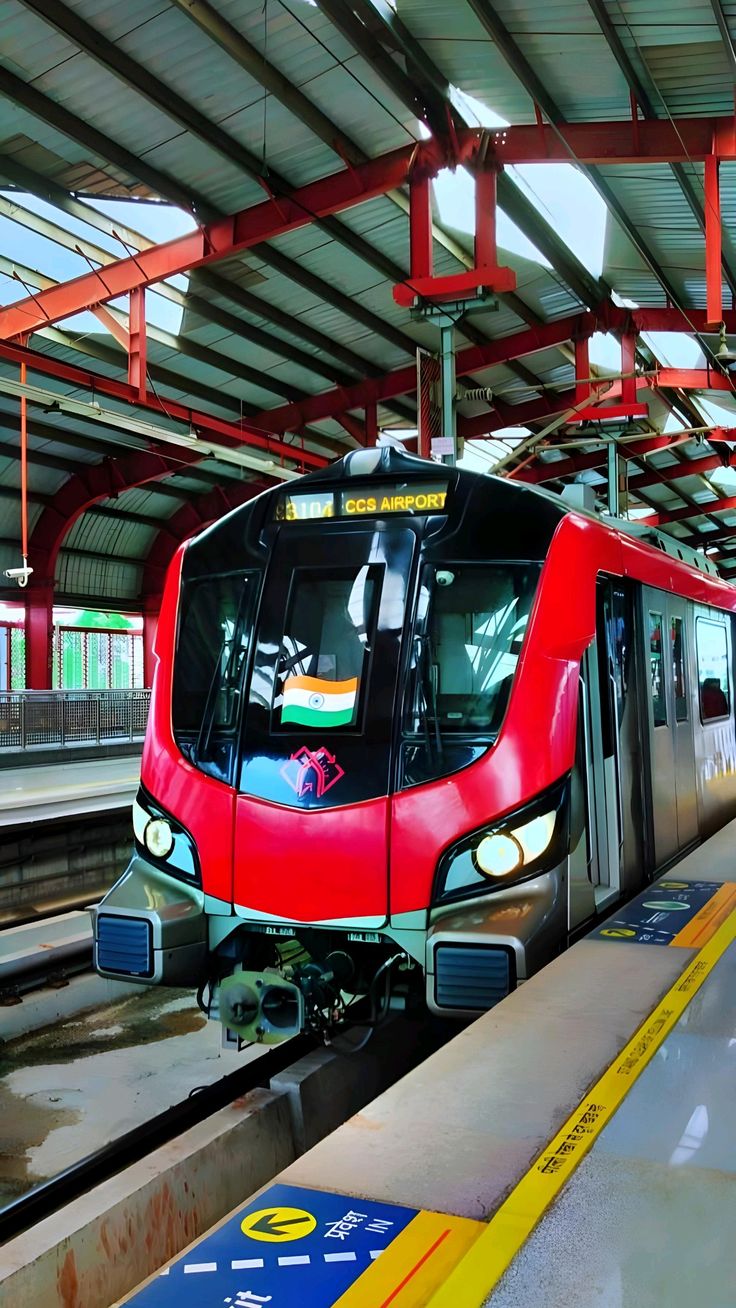Uttar Pradesh’s Capital Sets a New Standard in Sustainable Urban Transport
Lucknow, Uttar Pradesh: The city of Nawabs is witnessing a transformative shift in urban mobility with the expansion of the Lucknow Metro Rail Project, spearheaded by the Uttar Pradesh Metro Rail Corporation (UPMRC). The project not only promises seamless connectivity but also contributes significantly to reducing traffic congestion and urban pollution.
As of 2025, the metro network spans over 35 km, connecting key residential, commercial, and industrial hubs, with plans for further extensions underway.
Key Highlights of the Metro Expansion
Extended Connectivity
- The new metro lines connect densely populated areas like Jankipuram, Alambagh, and Amausi Airport, benefiting over 5 lakh daily commuters and significantly reducing travel time.
Eco-Friendly Transport
- Powered by regenerative braking technology and energy-efficient systems, Lucknow Metro has reduced carbon emissions by over 30,000 tons annually, according to UPMRC’s sustainability report.
Integration with Public Transport
- Seamless integration with city buses and shared mobility services has enhanced first- and last-mile connectivity, ensuring a hassle-free travel experience for commuters.
Economic and Environmental Impact
Reducing Vehicular Traffic
- The metro expansion has led to a 20% reduction in private vehicle usage, easing congestion on major roads like Hazratganj and Faizabad Road.
Boosting Local Economy
- Commercial hubs near metro stations have witnessed a 25% growth in footfall, contributing to increased revenue for local businesses.
Cleaner Air Quality
- With fewer vehicles on the road, Lucknow’s air quality has improved, with PM2.5 levels dropping by 15% in 2025, as per the Uttar Pradesh Pollution Control Board (UPPCB).
Passenger-Centric Features
Smart Ticketing and Accessibility
- The Lucknow Metro offers smart card ticketing, mobile app integration, and automated fare collection systems for a convenient and tech-savvy commute. Stations are equipped with elevators, ramps, and tactile paths, ensuring accessibility for all, including the differently-abled.
Safety and Comfort
- Advanced safety measures, including CCTV surveillance and emergency response systems, provide a secure travel experience. Air-conditioned coaches ensure comfort, even during peak summer months.
Future Plans for Lucknow Metro
- Expand the network to 50 km by 2030, connecting more areas like Sitapur Road and Barabanki.
- Introduce driverless metro trains to further enhance efficiency and safety.
- Implement solar energy systems at metro stations, targeting 20% energy self-sufficiency by 2028.
Lucknow: A Role Model in Urban Mobility
The expansion of the Lucknow Metro underscores the city’s commitment to sustainable development and modern infrastructure. By reducing pollution, improving connectivity, and boosting economic growth, the metro project is setting a benchmark for urban mobility in India.
As Lucknow continues to expand its metro network, it reaffirms its position as a forward-thinking city that balances tradition with innovation.


Leave a Reply